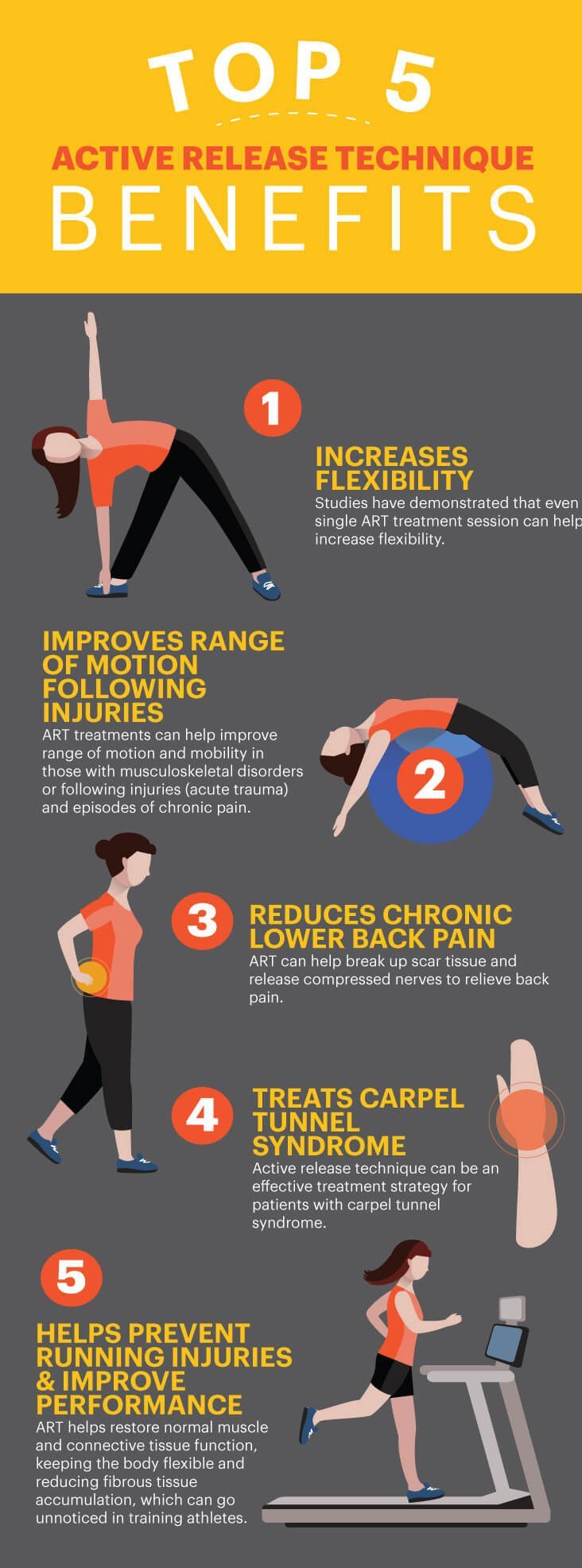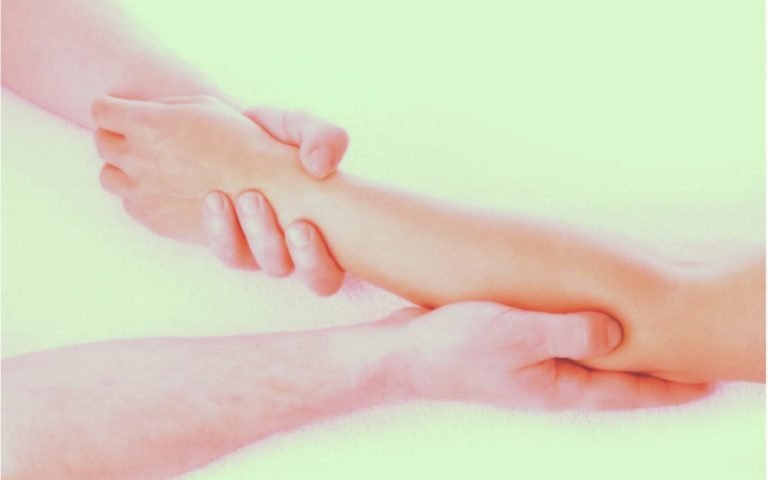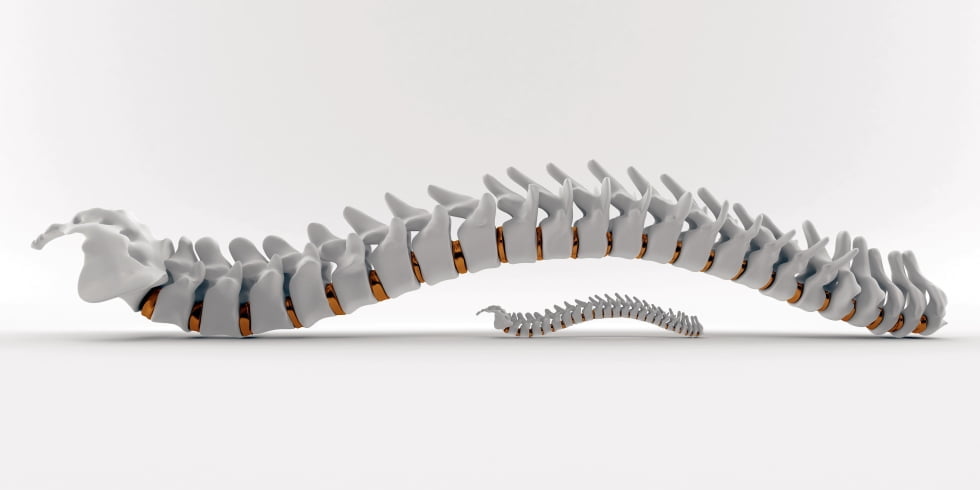
Chiropractic Techniques: ART or Active Release Technique
Pinpointing the exact cause and magnitude of musculoskeletal conditions is a difficult task for all practitioners. When a clinician has more tools in their toolbelt as assessment and treatment options, patient outcomes improve. Active Release Technique (ART) is one such tool.
What is ART and why does it work?

ART is a soft-tissue movement based massage technique utilized by some chiropractors to work directly with muscles, tendons, ligaments, and fascia. It helps to relieve tight muscles and nerve trigger points greatly reducing joint stress and muscle pain.
A single cause of pain or injury is relatively rare. Pain can result from a number of causes including dysfunctional joints, muscles, fascia as well as nerves. Chiropractors have extensive medical training lasting 4 years that focuses on the function of the musculoskeletal system, including the interaction of our spinal joints, nerves that come from the spine, and the muscles that are controlled by the nerves.
Active Release Technique works directly on the muscles and fascia surrounding the nerves to decrease muscle tension, release “pinched nerves”, and help with increasing the healing times of muscle, ligament, and its associated tendon fibres. The fascia and muscles, the connective tissue, surrounding the irritated nerve get stuck and decrease in elasticity, and stop moving normally. ART can help turn on the muscles that have been effectively turned off because of your injury and eliminate your muscular pain. The core benefit of ART is preventing and breaking up dense scar tissue which are also known as adhesions. Adhesions limit the normal range of motions of joints and muscles because they cause abnormal binding between muscle groups and are inflexible compared to healthy tissue.


What does ART feel like? Does it hurt?
Active Release Technique is completely different than traditional chiropractic spinal adjustments. ART does not involve joint adjustments – the focus is on the soft tissue component of musculoskeletal conditions. ART treatment varies depending on your condition. In some instances like a deep muscle pull, an ART treatment session can feel like a combination of a deep tissue massage and a deep stretching session.
Other conditions respond best to lighter practitioner force with their hands that removes pressure off of nerves, for example in a condition such as carpal tunnel syndrome. In most cases, the injured soft tissue component will be moved by the patient in a specific motion, the “active” component, while the chiropractor uses their hands on the affected muscle, ligament, or tendon to improve the movement, range of motion, and enhance healing on a cellular level. Sometimes the treatment can be uncomfortable during the session, similar to a deep tissue massage, but our chiropractors are always patient-driven and can adapt treatment to specific comfort levels while still being therapeutic.
How does abnormal tissue develop?
Abnormal tissue can develop from a number of situations:
- After a pull, tear or bruise
- Overuse leading to cumulative micro-trauma
- Decreased oxygen delivery to the area
Each of these situations results in the formation of scar tissue in the area. The scar tissue adheres to surrounding muscle, bone, nerves and fascia, preventing them from moving freely.
The goal of an ART treatment is to identify the abnormal tissue and restore normal movement by breaking up the scar tissue adhesions that have formed.
Treatment involves applying a specifically directed tension to the tissue, combined with patient-movement that is designed to take the affected tissue from a shortened to a lengthened state.


For what conditions is ART effective?
Chronic muscle tightness
ART can quickly loosen most muscle tightness caused by computer work or manual labour.
Spinal problems
ART provides a quick relief for a stiff neck or back, headaches, numbness and tingling into the hands or feet.
Tightness in the extremities
Tight hip muscles or ankles can be helped by treating the tight muscles, frozen shoulder, piriformis syndrome
Overtrained muscles and tendons
IT Band syndrome, shoulder rotator cuff injuries, hip flexor, groin strains, hamstring pulls, knee tendonitis and Achilles’ problems.
Repetitive strain injuries
Tennis elbow, plantar fascitis, shin splints, Carpal Tunnel Syndrome and De Quervain’s tenosynovitis can improve.
Is ART right for you?
A typical session of ART includes an assessment and evaluation of the causes of your pain, along with a treatment plan to get you back on the road to recovery. Each session is tailored to an individual’s situation and will change according to the progress being made each session. To find out more information, you can call Backs in Action at 604-876-9976, email us, or book an appointment directly online with one of our chiropractors.


